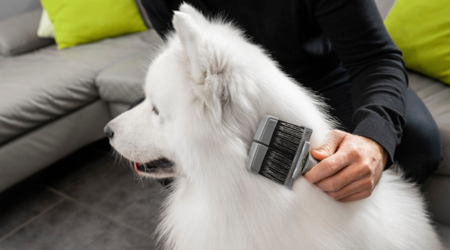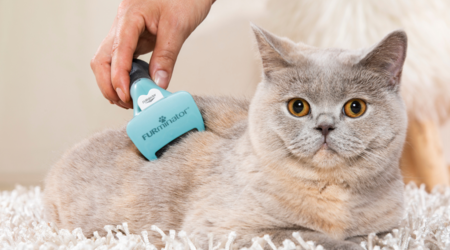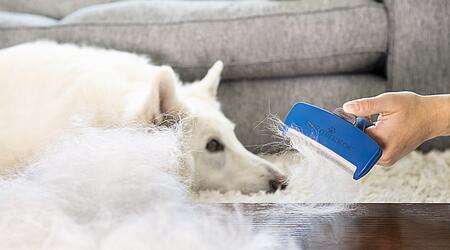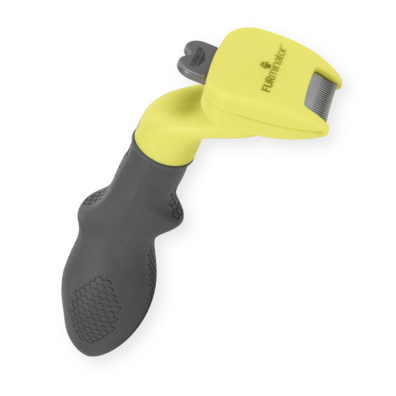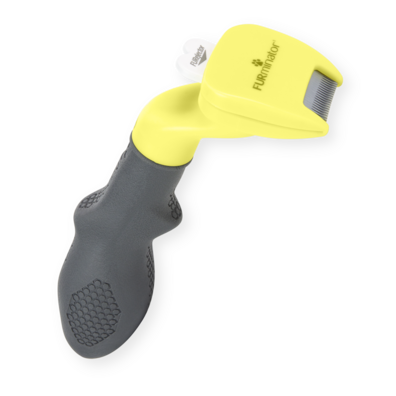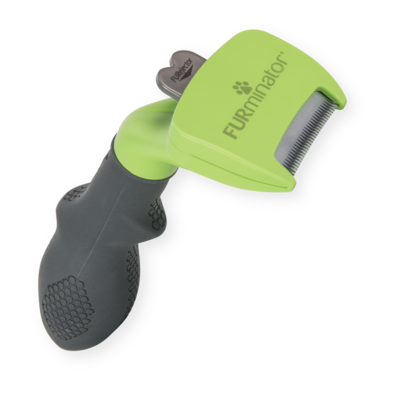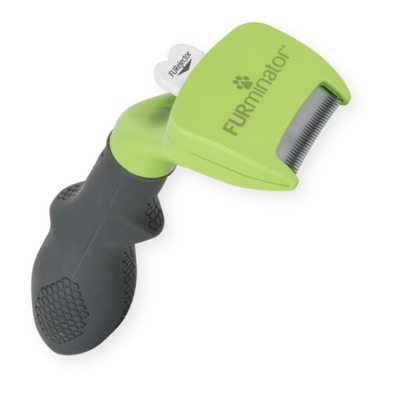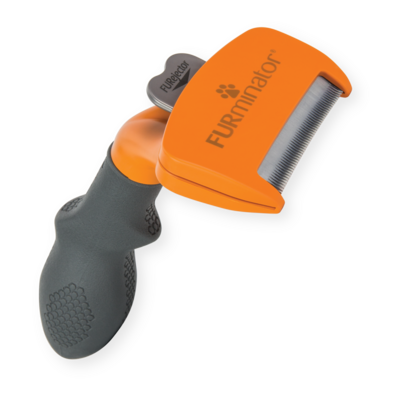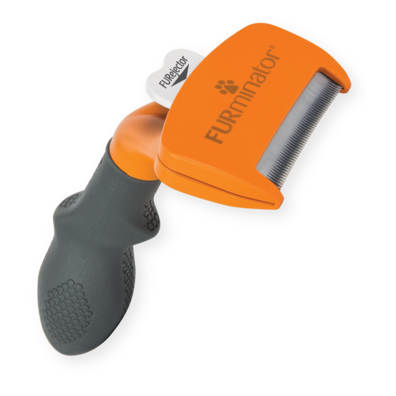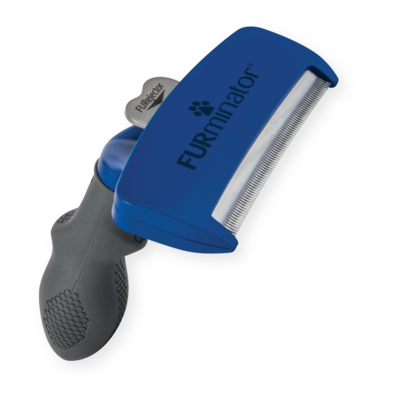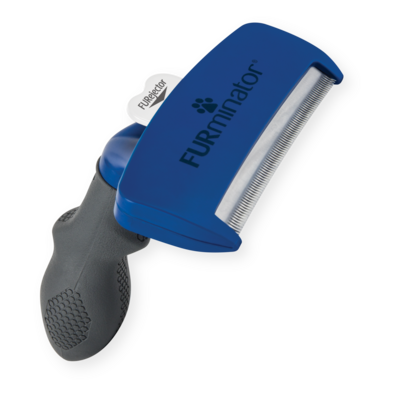What is deShedding and why should you do it?
DeShedding is the process of removing hair from your pet’s undercoat which may not be effectively removed with you’re the of brushing or combing, as these focus primarily on removing hair and debris from the top layer of fur.
That’s why deShedding can actually help reduce the amount of fur your pet sheds around your home, because you remove the fur from the undercoat before it has a chance to shed.
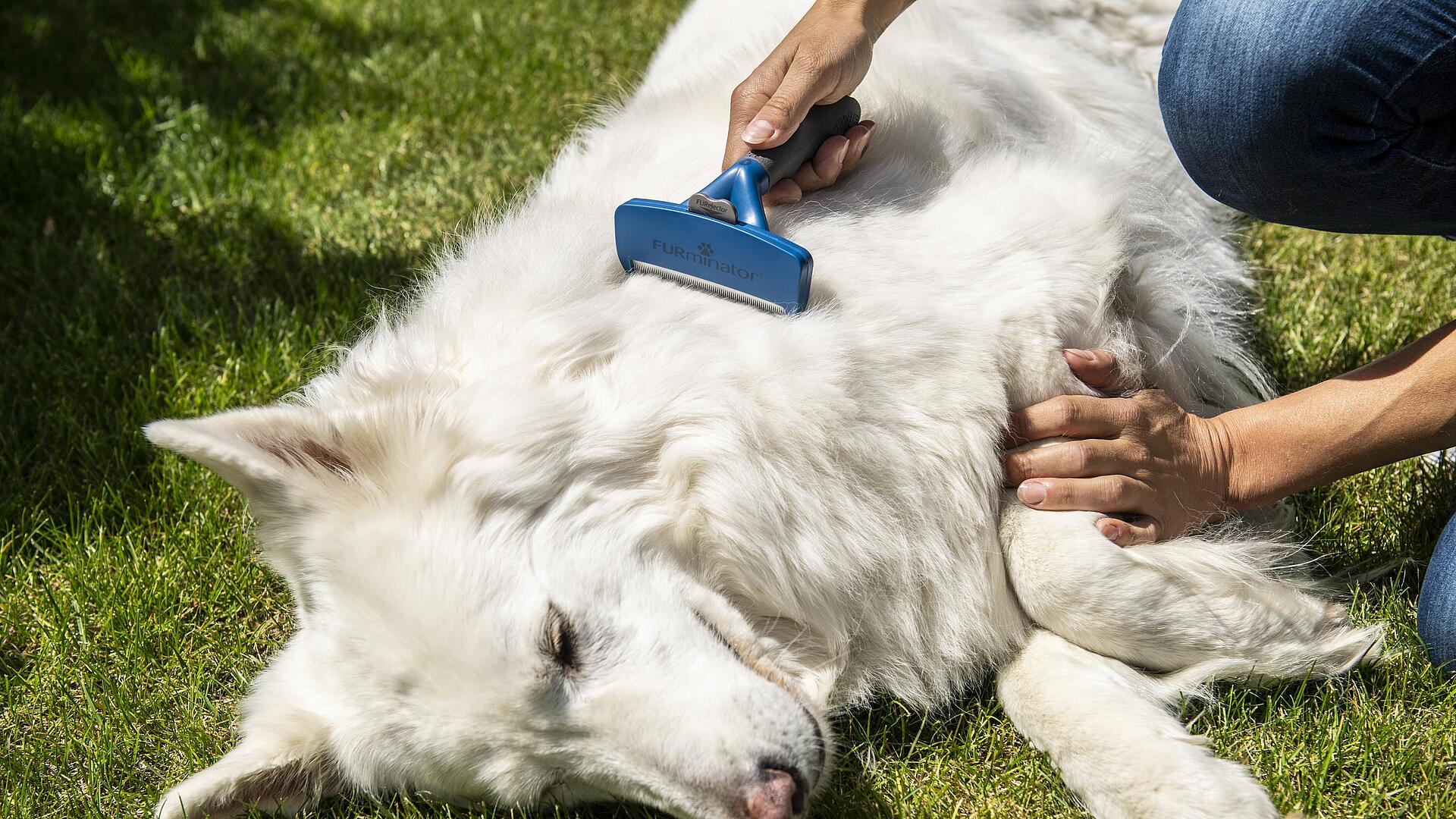
Why do pets shed their fur?
Shedding is a natural process for cats, dogs and other animals. Cats and dogs completely replace their coat every spring and autumn to adjust to the changes in temperature, and shedding can also happen throughout the year because pets live in our warm homes.
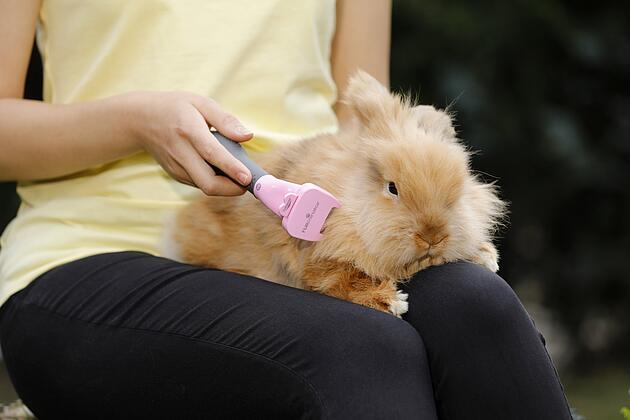
Different coat types
Different breeds of dog and cat have different types of fur. Most pets have a top coat (that’s the fur you see on the animal) and an undercoat. If you push back the top coat of your dog or cat, it’s likely that you’ll see a different type of fur, sometimes of a different colour, underneath.
This is the pet’s undercoat. It has a soft and downy texture and it provides insulation and protection, while the top coat is made up of ‘guard hairs’ whose primary function is to keep the pet’s skin dry.
Some pets shed more than others, and some don’t really shed at all. Some breeds, such as poodles, don’t have an undercoat. Their fur grows consistently and sheds less, meaning they need to be clipped regularly. Find out if a FURminator® Undercoat deShedding Tool is suitable for your pet.
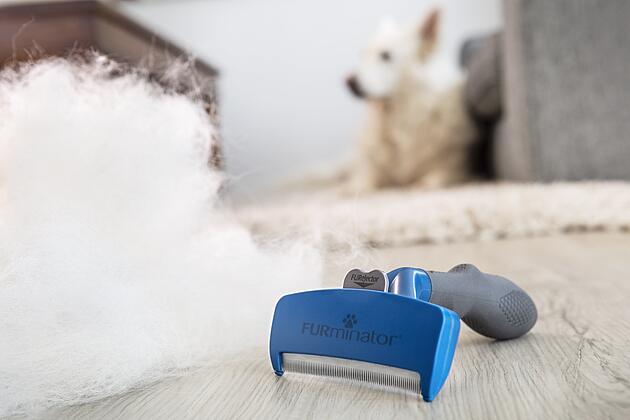
The shedding cycle
Cats, dogs, rabbits and other animals go through a four-step shedding cycle continuously:
- The growth phase – when the hair grows from the hair follicle
- The regressing phase – when the hair has stopped growing and reached its full length
- The rest phase – when the hair dies and becomes weak
- The shedding phase – when the hair falls out and is replaced by a new hair in the growth phase
There are other factors, too, which can influence shedding. For example, neutered pets are likely to shed more due to hormonal changes.
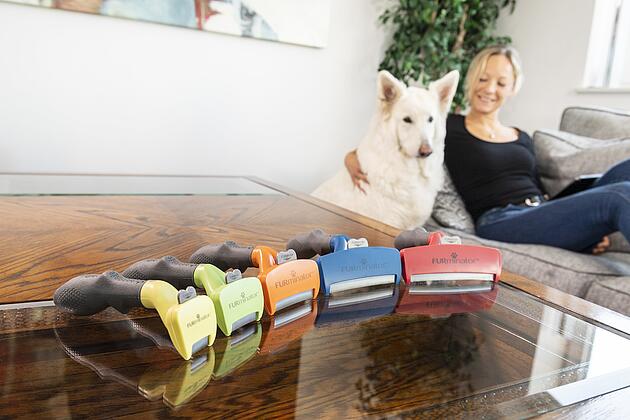
How to deshed your pet
DeShedding on a weekly basis as part of your regular grooming routine can really help to control the amount of fur around your home.
To deShed your pet, first thoroughly check your pet’s body and skin visually and by touch. If there are any sores, bruises or skin conditions, ask for your vet’s advice.
After you’ve removed any tangles or mats with a FURminator® dematter or comb, take a deShedding tool and gently stroke through your pet’s coat, working from the base of the neck to the tail. Repeat once or twice each week for 10 to 20 minutes.
FURminator’s range of unique undercoat deShedding tools make it easy and safe to deShed your pet on a regular basis. It features a curved edge which conforms to your pet’s body shape for comfort, as well as SkinGuard® to glide over the skin, preventing the tool from digging in and causing your pet any discomfort.
The stainless steel deShedding edge reaches through the topcoat to safely and easily remove loose hair and undercoat, while the patented FURejector® button makes it easy for you to release captured hair straight into the bin.
A common myth that the FURminator damages the coat is usually caused by improper use or use on unsuitable breeds. In fact, the tool is specially designed to remove loose undercoat effectively and gently. You can find out which dog and cat breeds are not suitable for grooming with a deShedding tool in our articles
- “Dog breeds that are not recommended for deShedding”
- "Cat breeds that are not recommended for deShedding"

